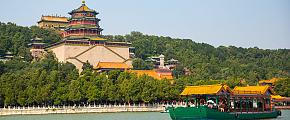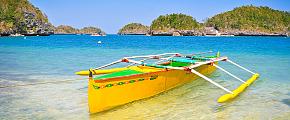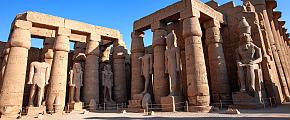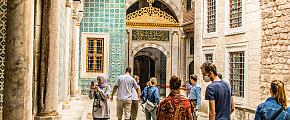Top 10 Tourist Sights to Visit in South Korea
There is nothing a tourist will not find on his trip to South Korea. This country has a rich history and traditions. It's home to delicious and varied cuisine, warm and welcoming locals, and top-notch tourist facilities. Historic Buddhistic monasteries atop the summit of mountains, such as Bulguksa, stand in stark juxtaposition to Seoul's futuristic skyscrapers.
You will also have the opportunity to visit one of the most improbable attractions you could have ever imagined in South Korea: the demilitarized zone between South Korea and North Korea. This piece of land is uninhabitable due to conflicts between the two countries.
Explore South Korea's most popular destinations by consulting this listing of the country's most popular tourist destinations.
Changdeokgung Palace
The Joseon Dynasty constructed five large palaces in Seoul throughout the fifteenth century, but the royal family always made their home at the magnificent Changdeokgung. It was the favorite residence of royalty and other members of the royal line.
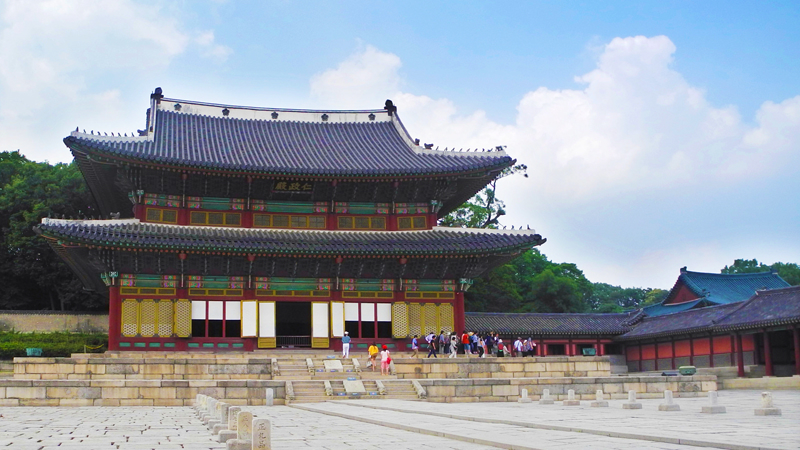 Changdeokgung Palace
Changdeokgung Palace
Changdeokgung Palace, at first impression, may look like a solitary structure, but it's a vast complex composed of many designs, each built for a unique objective. The royal family usually used them as lodgings, libraries, lunchrooms, or conference halls. The Huwon, or Changdeokgung garden, spans an impressive 78 acres and can be found directly to the rear of the structure. The area is rich in Buddhist temples, ponds, and rivers, and there are also plenty of green spaces and walkways.
Busan
Sunbathing lovers will be pleased in this beautiful city. The second biggest city in the nation, it has fantastic coastlines, several stunning beaches, and luxurious hotels. Culturally and historically, this area is rich as well. It is highly recommended that you make a stop at the Beomeosa Temple as well as the mountain village of Gamecheon. This picturesque small village style is highly influenced by some European towns built on mountains overlooking the sea. Just like Santorini, Gamecheon is a heavenly place.
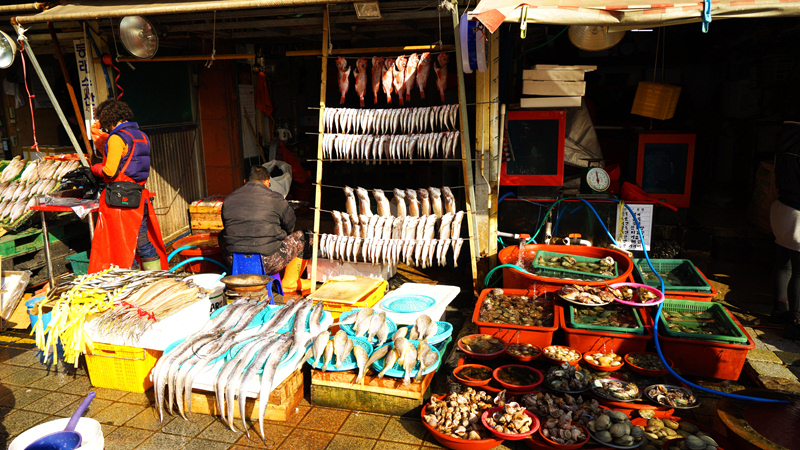 Seafood Market in Busan
Seafood Market in Busan
In South Korea, seafood gourmets must go to Jagalchi Marketplace, the leading seafood marketplace in South Korea. Visitors can shop in an open-air section of the market and then have their acquisition prepared at one of the numerous nearby establishments to enjoy freshly cooked seafood.
Enjoy a fantastic experience aboard the KTX bullet trains from Seoul to Busan in less than two hours.
Jeonju
It takes roughly two hours to travel from Seoul to Jeonju, a historic city that once served as the Joseon Dynasty's spiritual capital. You will visit a traditional Korean village called "hanok" and several shrines and temples in this city. They're all over the Korean peninsula. Historical and traditional Korean houses (hanoks) have been maintained in these areas, giving tourists a glimpse into Korean life from centuries past.
Most of the hanok houses in the towns are still privately owned; a handful of their visits are available, while some are now used as eateries, hotels, and museums.
N Seoul Tower
The Seoul Sky Tower is a must-do for every tourist in the city. Five hundred meters tall above the ground and located just about a mountain top, the N Seoul Tower gives an astonishing view of the surrounding metropolis. Still, plan to spend at least a little of your day in the nearby mountains. Once you are at the N Seoul Tower, which is very conveniently located near the peak of Mount Namsan, also visit Namsan Park and its beautiful surroundings. In only a short drive from Seoul's central district are kilometers of walking trails just waiting to be explored.
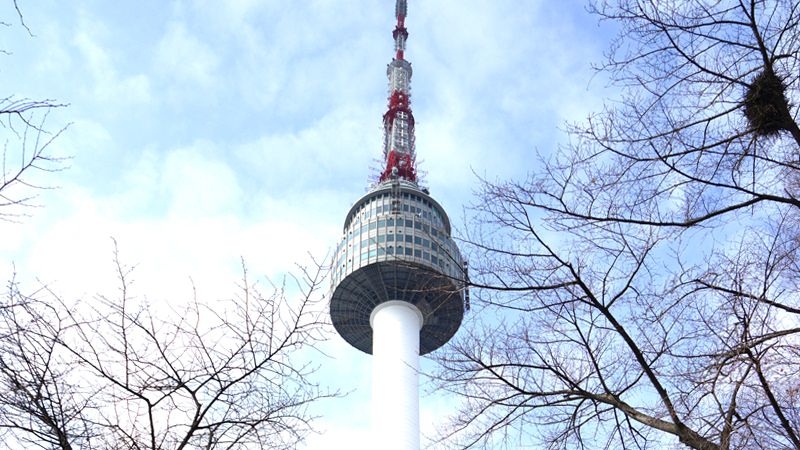 N Seoul Tower
N Seoul Tower
The N Seoul sky Tower's upper floors have internal and external observation decks and dining establishments. There are LED lights covering the whole outer structure of the skyscraper, and there are unique light displays to celebrate the different seasons every night.
From downtown (in the vicinity of Myeongdong), you can ride a gondola to the building's lower station. From this location, you can start your trek. If you plan on taking the gondola up the peak and exploring the Namsan Hanok Village, allow yourself some extra time. You may visit these carefully maintained historical villages that are faithful recreations of traditional Korean settlements across Seoul and the rest of the country. Five hanoks (Korean wooden houses) have been renovated and make up this community.
Bukchon Hanok Village
When visiting one of the few remaining Hanok villages in Seoul or South Korea, you will have the feeling of walking in a living museum. They are historic communities that have been reconstructed using hanoks dwellings from somewhere else or have been repaired and kept in their former locations (such as Bukchon). Here, visitors are taken back 600 years and can enjoy a unique experience of everyday life in these small villages.
These small communities often host cultural displays, so you can get a feel for South Korean history and tradition and enjoy the thrill of walking through the country's charming, winding alleyways. Quite a few of these residences are B&Bs. The fact that most of the houses in these villages are inhabited by the actual local population is part of what makes this experience so remarkable.
In addition to being located in the heart of Seoul, near Buckchon Hanok village, just 688 meters away, you can visit Gyeonbokgung Palace or opt for a guided tour to Chabgdeokgung Palace, located not far away at only 558 meters.
Seoraksan National Park
Seoraksan National Park is a magnificent natural marvel with mountains, ponds, cascades, rivers, and great distances of trekking routes to discover that will make you think of Yosemite in California. Korea's first national park is famous for its ecological richness due to the presence of more than 1,600 varieties of wildlife and more than 1,200 types of flora.
In addition to its natural beauty, the park is home to a pair of Buddhist temples, one of which, Baekdamsa (Hundred Pool Temple), is now a significant temple of the Jogye Order of Korean Buddhism. Clean water from the foothills of Daecheongbong Peak flows into hundreds of pools throughout the temple complex, thus the name Hundred Pools Temple.
You can ride the cableway up Seoraksan Mountain if you're weary of hiking, and once you reach the top, you'll be rewarded with breathtaking panoramas of the surroundings.
The DMZ
Following the end of the Conflict between South Korea and North Korea in 1953, the two countries were divided by the DMZ (Demilitarized Zone). The Demilitarized Zone (DMZ) is a small territory about 4 kilometers broad that divides the Korean Peninsula in half. It is situated around 60 kilometers to the north of the capital city of South Korea, Seoul.
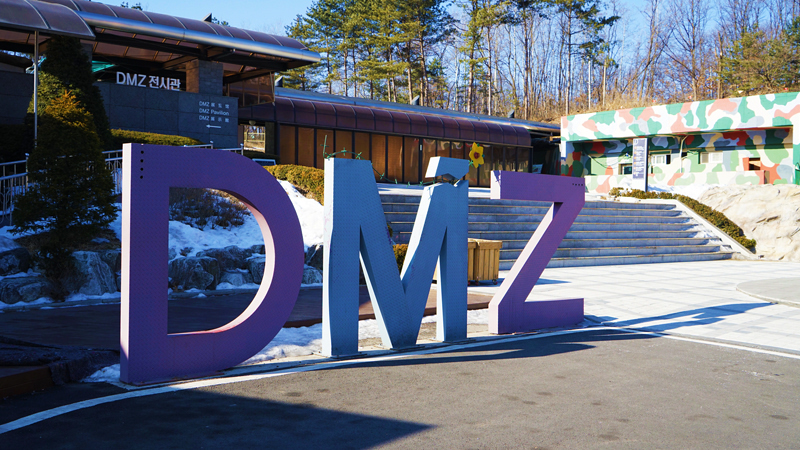 Demilitarized Zone
Demilitarized Zone
Suppose you plan on visiting the Demilitarized zone. In that case, a guided tour gives you the fantastic opportunity to gain insight into the origin of the conflict between both countries and the present-day condition in the area. Not only is this area unpopulated, but the absence of populations helps preserve historically important and ecological landmarks.
Imjingak Park, built in 1972, is a moving tribute to the South Korean patriots who gave their lives for the country. The sentimental and symbolic significance of the park cannot be overstated since it is dedicated to honoring families split apart by the partition of Korea. The park represents a longing for eventual harmony. The park has around 400 displays relating to North Korea. The Mangbaedan Altar in Nonsan Park is a popular destination for North Korean families to visit during summer to perform religious rites.
One attraction that draws the most tourists to the DMZ is the Third Tunnel, dug during the war and uncovered in 1978. North Korean soldiers used these underground passages (four of them) to lunch surprise attacks on South Korea. Often called the Third Tunnel of Aggression, it can move 30,000 men in one hour. These tunnels give us an overview of the intensity of conflicts during that period.
Nuri Park is a lovely, peaceful green space located in the demilitarized zone. There is a monument of birds (doves), a universal sign of peace, to remember the evils of conflict. In addition to its historical significance, the park is famous for its unusually verdant vegetation.
National Museum of Korea
The Korean National Museum is among Seoul's oldest museums specializing in contemporary and modern art. In 1945, the MMCA opened its doors to the public, showcasing a variety of Korean artistic creations. There are more than 220,000 pieces of art in the national art gallery, from ancient Korean ceramics to cutting-edge multimedia displays. During your visit to the MMCA, besides the perpetual collection of museum exhibits, you will also have the occasion to discover and admire renowned and rising artists' artwork during short-term displays aiming to highlight the talents of up-and-coming creatives. A research facility, bibliotheca, and theater are all located inside the National Museum, making it a perfect destination for academics and curious sightseers.
The Korean National Museum is a gigantic building with three floors of exhibitions where you can learn a great deal about Korean history and art. In addition to its vast collection, the exotic and natural decor of the museum interior and exterior create a friendly atmosphere making your visit more delightful. Moving ahead, they want to emphasize presenting international artistry. The mission of The National Museum of art and Contemporary Art, as expressed via its different sites, is to serve as a stage that promotes a wide range of creative work.
Lotte World
Precisely in the heart of Seoul city is a funfair complete with rides and a bunch of attractions. Spending time there is a great way to get a taste of authentic Korea's commercial style and is an enjoyable experience on its own way. Skate on ice is only one of the many activities available at Lotte World, which also has a resort, the biggest cinema platform on the globe, a cultural exhibition, and other attractions.
The Lotte Tower is South Korea's highest structure and the world's fifth-highest skyscraper, and at its foot stands the amusement park. The edifice has a wide variety of shops, restaurants, and an expensive resort, all of which can be reached by a series of elevators.
Parents and children alike will enjoy the many boutiques, handicrafts, and traditional shows on display, in addition to the many entertainments.
Gyeongbokgung Palace
Gyeongbokgung Palace, sometimes called the Palace of the North, is a massive building that has seen enormous upheaval throughout history. Its original structure dates back to 1395 when it was constructed as one of five royal palaces for the Joseon dynasty that ruled Korea and was centered in Seoul. After being attacked, devastated repeatedly, and seized by Japan's army from the beginning of 1593, the palace was ultimately reconstructed around 1990. Visit the Gyeonghoeru Pavillion and Hyangwonjeong Lake, two of the few surviving Joseon-era edifices.
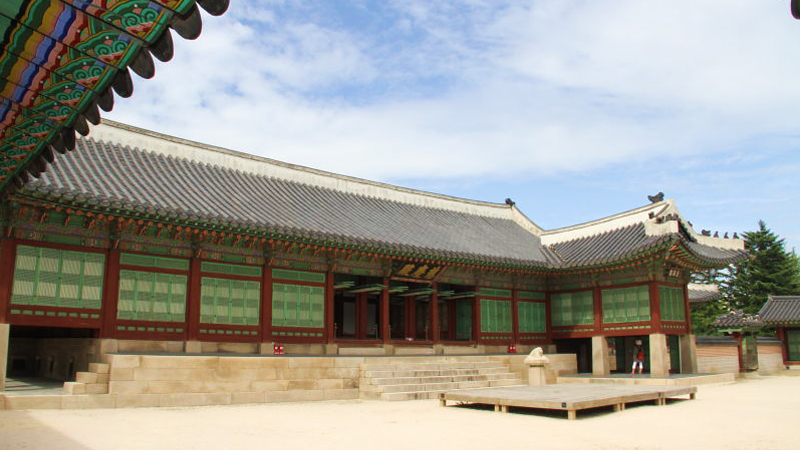 Gyeongbokgung Palace
Gyeongbokgung Palace
If you're planning to travel to South Korea, please don't hesitate to contact us, just simply tell us your interests and needs, and one of our travel experts will create a tailor-made itinerary for you within 24hrs.

